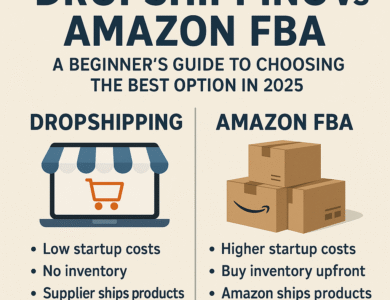Unlocking the Secrets of Master Suppliers: Your Guide to Streamlined Procurement

In today’s fast-paced business world, having the right suppliers can make or break your procurement process. Master suppliers play a vital role in ensuring that your operations run smoothly and efficiently. This guide will help you understand how to effectively manage these key relationships, leverage technology, streamline your processes, and measure success. Let’s explore the essential strategies for unlocking the full potential of your master suppliers and enhancing your procurement efforts.
Key Takeaways
- Master suppliers are essential for efficient procurement and should be chosen carefully.
- Strong relationships with suppliers lead to better communication and problem-solving.
- Using technology can automate tasks and provide insights into supplier performance.
- Regularly reviewing procurement processes helps identify areas for improvement.
- Establishing clear performance metrics is crucial for measuring success with suppliers.
Understanding Master Suppliers
Defining Master Suppliers
Okay, so what is a master supplier? Basically, it’s a supplier you rely on heavily. They’re not just someone you buy stuff from; they’re a key part of your operation. Think of them as more of a partner than just a vendor. They usually handle a significant chunk of your supply needs, and you’ve probably got a long-term agreement with them. It’s about more than just price; it’s about reliability, quality, and sometimes even innovation. You might even share some internal data with them to help them better meet your needs.
The Importance of Supplier Relationships
Why bother with building strong relationships? Well, it’s simple: good relationships mean better deals, more reliable supply, and fewer headaches. When you treat your suppliers well, they’re more likely to go the extra mile for you. This can translate into things like priority shipping, better pricing, and even early access to new products or services. Plus, a strong relationship can help you weather any storms, like supply chain disruptions or unexpected demand spikes. It’s all about building trust and mutual benefit. Think of it as an investment in your company’s future. You can improve your purchasing management by focusing on relationships.
Evaluating Supplier Performance
So, how do you know if your master supplier is actually good? You need to track their performance. This isn’t just about whether they deliver on time; it’s about a whole range of factors. Here are some things to consider:
- On-time delivery rate: Are they consistently meeting deadlines?
- Quality: Is the product or service up to par?
- Responsiveness: How quickly do they respond to your inquiries?
It’s important to set clear expectations from the start and then regularly review their performance against those expectations. This helps you identify any areas where they might be falling short and gives you a chance to work with them to improve. Don’t just assume everything is fine; actively monitor and measure their performance.
Here’s a simple example of how you might track performance:
| Metric | Target | Actual | Notes |
|---|---|---|---|
| On-time Delivery | 95% | 98% | Exceeded target! |
| Product Quality | 99% | 97% | Needs improvement; investigate issues. |
| Response Time (Avg) | 24 hrs | 36 hrs | Slower than expected. |
Building Strong Supplier Partnerships
It’s easy to think of suppliers as just vendors, but that’s a mistake. Building real partnerships with your suppliers can seriously improve your procurement process and overall business performance. It’s about more than just getting the lowest price; it’s about creating a relationship built on trust and mutual benefit.
Fostering Open Communication
Communication is key. You need to be able to talk to your suppliers openly and honestly, and they need to be able to do the same with you. This means setting up regular meetings, sharing information freely, and being responsive to each other’s needs. When you have open lines of communication, you can address problems quickly and efficiently, and you can also identify opportunities for improvement. This can lead to better quality, faster delivery times, and lower costs. It’s a win-win.
Collaborative Problem Solving
Problems are inevitable. The key is how you handle them. Instead of pointing fingers, work with your suppliers to find solutions. This might involve brainstorming, sharing data, or even visiting each other’s facilities. When you approach problems collaboratively, you build trust and strengthen your relationship. Plus, you’re more likely to find creative and effective solutions. For example, if you’re experiencing delays in delivery, you might work with your supplier to identify the root cause of the problem and develop a plan to address it. This might involve adjusting production schedules, improving logistics, or even changing the design of your product. By working together, you can overcome challenges and achieve better results. Understanding supplier dynamics is crucial for this.
Negotiating Win-Win Agreements
Negotiation doesn’t have to be a zero-sum game. You can negotiate agreements that benefit both you and your suppliers. This means being willing to compromise and finding solutions that meet both of your needs. It also means being transparent about your goals and priorities. When you negotiate in good faith, you build trust and create a foundation for a long-term relationship. A good vendor contract negotiation process is key.
Think of your suppliers as an extension of your own team. When they succeed, you succeed. By building strong partnerships, you can create a more resilient and efficient supply chain, and you can achieve better results for your business.
Leveraging Technology in Procurement

Procurement is changing fast, and if you’re not using tech, you’re getting left behind. It’s not just about fancy software; it’s about making smarter, faster decisions. Let’s look at how tech can seriously improve your procurement game.
Automation Tools for Efficiency
Automation is a game-changer. Think about all those repetitive tasks that eat up your time – purchase orders, invoice processing, and even basic supplier communication. Automation tools can handle these tasks, freeing up your team to focus on more strategic work.
- Automated purchase order creation and approval workflows.
- Invoice processing with automated matching and reconciliation.
- Automated supplier onboarding and information management.
Implementing automation isn’t just about saving time; it’s about reducing errors and improving accuracy. This leads to better compliance and fewer headaches down the road.
Data Analytics for Supplier Insights
Data is king, and that’s especially true in procurement. Data analytics tools can give you a much clearer picture of your suppliers, your spending, and your overall procurement performance. You can use this information to negotiate better deals, identify potential risks, and make smarter decisions about who you work with. For example, you can use procurement tools to analyze supplier performance.
- Spend analysis to identify cost-saving opportunities.
- Supplier performance monitoring to track key metrics.
- Risk assessment to identify potential supply chain disruptions.
Integrating Procurement Software
Having different software systems that don’t talk to each other is a recipe for disaster. Integrating your procurement software with other systems, like your accounting software or your inventory management system, can streamline your processes and give you a more complete view of your business. It’s about creating a connected ecosystem where information flows freely and decisions are based on accurate, up-to-date data.
| System 1 | System 2 | Benefit |
|---|---|---|
| Procurement | Accounting | Automated invoice reconciliation |
| Procurement | Inventory | Real-time inventory updates |
| Procurement | CRM | Better supplier relationship management |
Streamlining Procurement Processes
Identifying Bottlenecks
Okay, so you’re trying to make your procurement process smoother, right? First thing’s first: you gotta figure out where things are getting stuck. Think of it like a clogged pipe – you need to find the blockage before you can fix it. Are purchase requests taking forever to get approved? Is there a specific supplier that always causes delays? Maybe the problem is with your purchase order process? Talk to the people involved, look at the data, and find those pain points. Once you know what’s slowing you down, you can actually do something about it.
Implementing Process Improvements
Alright, you’ve found the bottlenecks. Now comes the fun part: fixing them! This isn’t about making huge, sweeping changes all at once. Start small. Maybe it’s as simple as creating a template for purchase requests to make sure everyone includes the right information. Or perhaps you need to clarify the approval process so people know who needs to sign off on what. Here are some ideas:
- Automate repetitive tasks. Seriously, if a computer can do it, let it.
- Standardize your processes. Everyone should be following the same steps.
- Train your team. Make sure everyone knows how the process works and why it’s important.
Don’t be afraid to experiment. Try different solutions and see what works best for your team. The goal is to make the process as efficient and painless as possible.
Best Practices for Procurement
To really nail procurement, you need some solid best practices in place. It’s not just about fixing problems as they come up; it’s about setting yourself up for success from the start. Here’s a few things to keep in mind:
- Communicate clearly with suppliers. A good relationship can save you a lot of headaches.
- Use data to make decisions. Don’t just guess; look at the numbers.
- Regularly review your processes. What worked last year might not work this year.
| Practice | Description Don’t be afraid to ask for help when you need it. There are plenty of resources available to help you improve your procurement skills.
Measuring Success with Key Performance Indicators

It’s easy to get lost in the day-to-day of procurement, but how do you know if you’re actually improving? That’s where Key Performance Indicators (KPIs) come in. They’re like your GPS, showing you if you’re on the right track. Without them, you’re just driving around hoping to get somewhere good.
Defining Relevant KPIs
Okay, so what KPIs should you even be looking at? It really depends on what your company cares about most. Are you trying to cut costs? Improve quality? Speed things up? Your KPIs should reflect those goals. Here are a few ideas to get you started:
- Cost Savings: How much money are you saving through better deals or process improvements?
- Supplier Lead Time: How long does it take for a supplier to deliver after you place an order?
- Defect Rate: How often are you receiving faulty goods from suppliers?
- On-Time Delivery: What percentage of your orders arrive when they’re supposed to?
Don’t just pick random KPIs. Make sure they’re actually meaningful and that you can track them accurately. Think about what really matters to your business and go from there.
Tracking Supplier Performance
Once you’ve got your KPIs, you need to actually track them. This isn’t a one-time thing; it’s an ongoing process. You need to regularly collect data and see how your suppliers are doing. This will help you identify which suppliers are performing well and which ones need some… encouragement. You can use a simple spreadsheet, or better yet, some kind of procurement software to help you with this. Consistent tracking is key to identifying trends and areas for improvement.
Here’s a simple example of how you might track supplier performance:
| Supplier | On-Time Delivery Rate | Defect Rate | Cost Savings (vs. Last Year) |
|---|---|---|---|
| Acme Corp | 95% | 1% | 5% |
| Beta Inc | 80% | 5% | 2% |
| Gamma Co | 99% | 0.5% | 7% |
Analyzing Cost Savings
Cost savings are a big deal in procurement. Everyone wants to save money, right? But it’s not enough to just say you saved money. You need to be able to show how you saved it. Did you negotiate better prices? Find a cheaper supplier? Reduce waste? Understanding where your cost savings are coming from is important for making future decisions. You can use procurement KPIs to track this.
Analyzing cost savings isn’t just about looking at the numbers. It’s about understanding the story behind those numbers. What actions led to those savings? What can you learn from those successes (or failures) to improve your procurement processes in the future? It’s about turning data into actionable insights.
Navigating Challenges in Supplier Management
Supplier management isn’t always smooth sailing. You’re bound to hit some rough patches. It’s all about how you handle them that makes the difference. Let’s look at some common issues and how to deal with them.
Addressing Supply Chain Disruptions
Supply chains are complex, and things can go wrong. A factory fire, a port strike, or even just a sudden surge in demand can throw everything off. The key is to have a plan B, and maybe even a plan C. Diversifying your supplier base is a good start. Don’t rely too heavily on just one source. Also, keep an eye on what’s happening in the world. Knowing about potential problems early gives you time to react.
Managing Supplier Risks
Suppliers can pose different kinds of risks. There’s the risk that they won’t deliver on time, or that the quality won’t be up to par. There’s also the risk that they could go out of business, or that they’re not following ethical practices. You need to assess these risks and take steps to mitigate them. This could involve things like:
- Doing background checks on suppliers
- Setting clear expectations in your contracts
- Regularly auditing their operations
It’s also a good idea to have a system for tracking supplier performance. This will help you identify potential problems early on. If a supplier starts missing deadlines or the quality starts to slip, you’ll know right away and can take action.
Ensuring Compliance and Quality
Making sure your suppliers are following the rules and delivering quality products is super important. This means checking that they’re meeting all the relevant regulations, like environmental laws or labor standards. It also means making sure their products meet your quality standards. One way to do this is through regular audits. You can also require suppliers to provide certifications or test results. This helps you maintain quality control and avoid any nasty surprises down the road. It’s all about protecting your brand and your customers.
Future Trends in Supplier Management
Sustainability in Procurement
Sustainability is becoming a huge deal. Companies aren’t just talking about it; they’re actually putting money and effort into making their supply chains greener. This means looking at everything from where materials come from to how products are shipped and even how suppliers treat their workers. Consumers are demanding it, and regulations are getting stricter, so it’s not optional anymore.
- Reducing carbon footprint
- Ethical sourcing
- Waste reduction
It’s not just about being nice; sustainable practices can actually save money in the long run by reducing waste and improving efficiency. Plus, it can boost a company’s reputation, which is always a good thing.
The Rise of Digital Procurement
Digital procurement is changing how companies handle purchasing. We’re talking about using software and online platforms to automate tasks, analyze data, and connect with suppliers more easily. This can make the whole process faster, cheaper, and more transparent. Think about it: no more endless paperwork or phone calls. Automation tools are making things easier.
- E-procurement platforms
- AI-powered analytics
- Blockchain for transparency
Adapting to Global Market Changes
The global market is always changing, and companies need to be ready to adapt. This means being flexible, diversifying suppliers, and keeping an eye on what’s happening around the world. Things like trade wars, political instability, and natural disasters can all disrupt supply chains, so it’s important to have a plan B (and maybe even a plan C). It’s about managing supplier risks effectively.
- Diversifying supplier base
- Risk management strategies
- Real-time monitoring of global events
Wrapping It Up
So, there you have it. Mastering your supplier relationships can really change the game for your procurement process. It’s all about being smart with your choices and keeping those lines of communication open. By focusing on building solid partnerships and staying organized, you’ll find that procurement doesn’t have to be a headache. Remember, it’s not just about getting the best price; it’s about creating a system that works for you and your suppliers. Take these tips to heart, and you’ll be well on your way to making procurement a breeze.
Frequently Asked Questions
What are master suppliers?
Master suppliers are key vendors that a business relies on for important goods or services. They help streamline the procurement process.
Why are supplier relationships important?
Good relationships with suppliers can lead to better prices, improved quality, and faster delivery times, which helps businesses run smoothly.
How can I evaluate supplier performance?
You can assess suppliers by looking at their delivery times, product quality, and how well they respond to issues.
What technology can help in procurement?
Using automation tools and data analysis can make procurement faster and easier by improving order tracking and inventory management.
What are some ways to improve procurement processes?
Identifying problems in the process and making adjustments can help. Following best practices also leads to better efficiency.
What trends should I watch in supplier management?
Keep an eye on sustainability efforts, digital procurement tools, and changes in the global market that could affect suppliers.




I’m so glad I found this post. The content is both informative and easy to understand, which is a rare combination. I also appreciate how you’ve included real-world examples to help bring the concepts to life.
I thoroughly enjoyed reading this post. Your ability to explain complex concepts in a simple and engaging way is truly impressive. I also appreciate the practical tips you’ve provided, which I can start applying immediately.